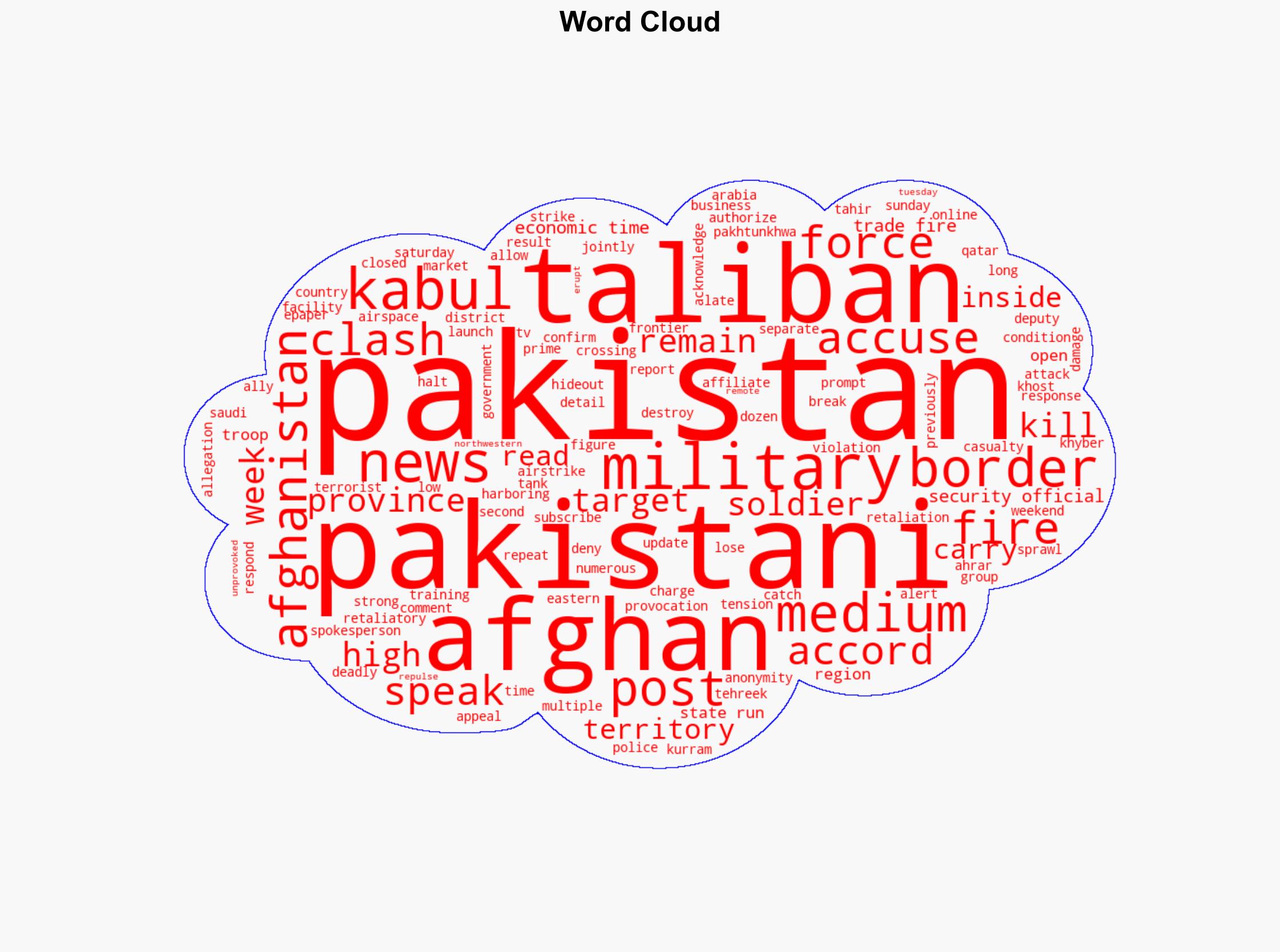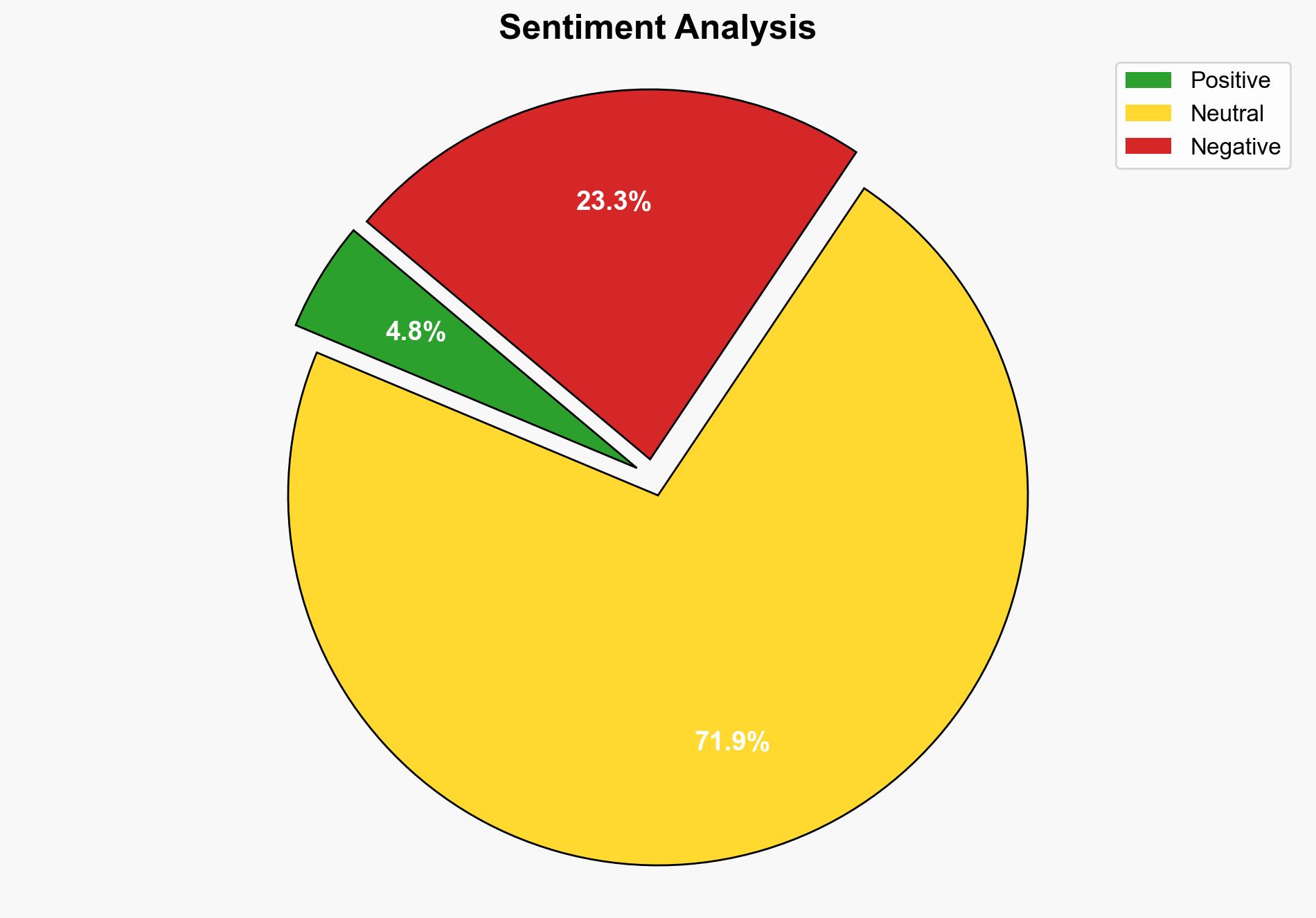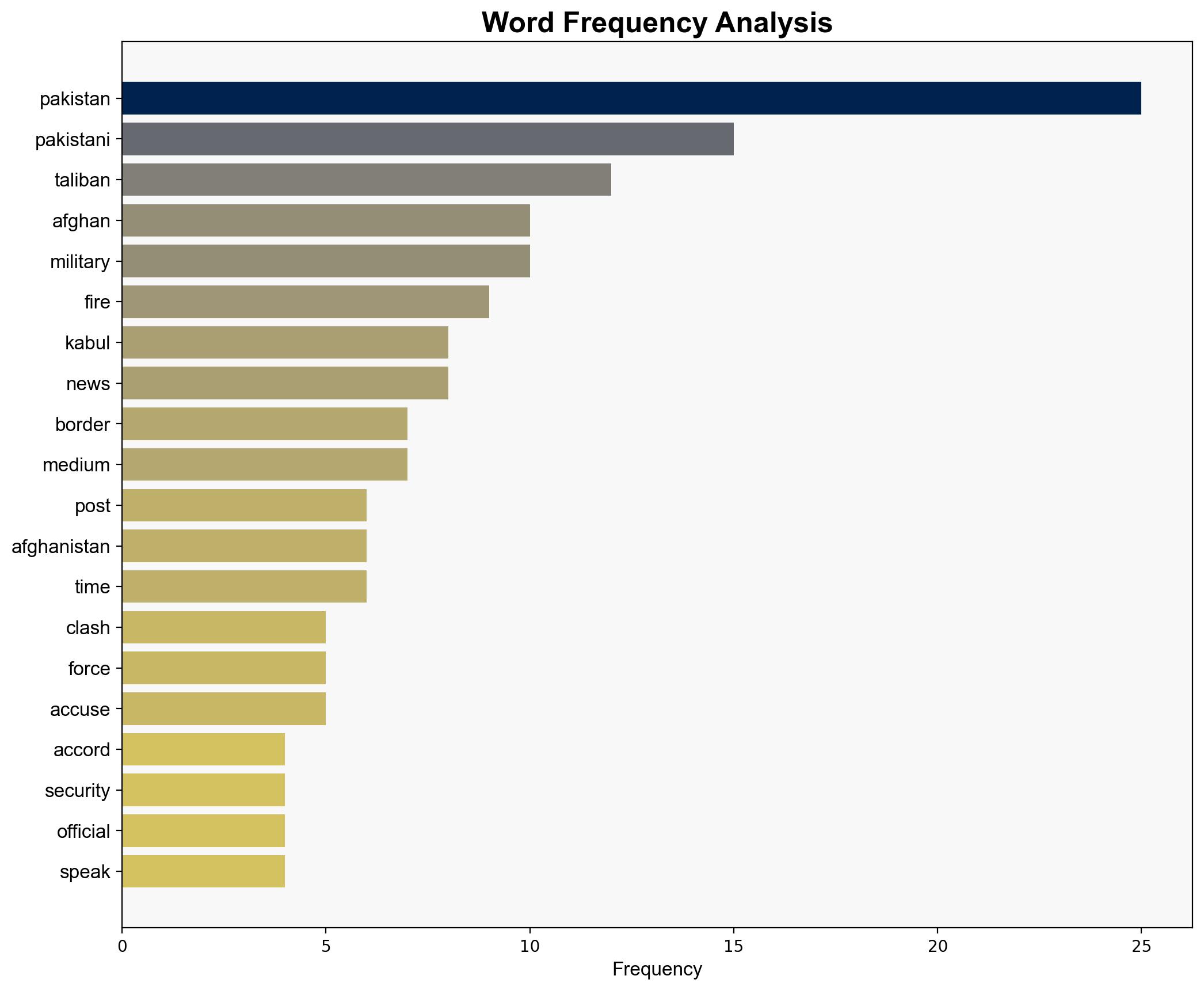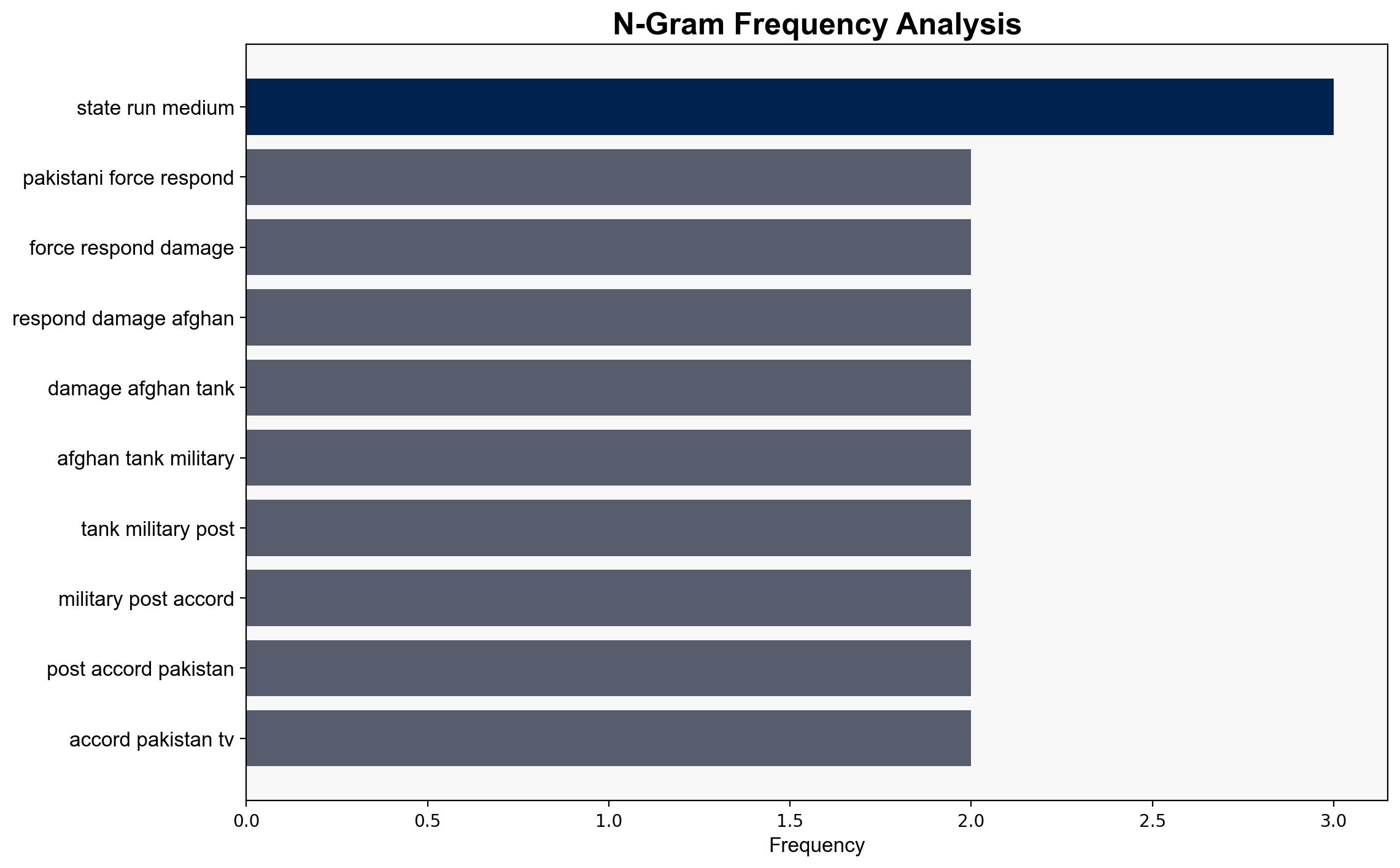Pakistan reports a new clash with Afghan forces along northwest border – The Times of India
Published on: 2025-10-15
Intelligence Report: Pakistan reports a new clash with Afghan forces along northwest border – The Times of India
1. BLUF (Bottom Line Up Front)
The most supported hypothesis is that the recent clashes between Pakistani and Afghan forces are primarily driven by Pakistan’s efforts to counter perceived threats from the Pakistani Taliban (TTP) operating from Afghan territory. This assessment is made with moderate confidence due to the complexity of regional dynamics and historical tensions. It is recommended that diplomatic channels be reinforced to de-escalate tensions and address mutual security concerns.
2. Competing Hypotheses
1. **Hypothesis A**: The clashes are primarily a result of Pakistan’s proactive measures against the TTP, which is allegedly using Afghan territory as a base for operations against Pakistan. The Pakistani military’s actions are defensive, aimed at neutralizing threats and preventing cross-border terrorism.
2. **Hypothesis B**: The clashes are a consequence of broader geopolitical tensions between Pakistan and Afghanistan, exacerbated by mutual distrust and accusations of territorial violations. Both sides are engaging in military posturing to assert dominance and influence over the border region.
Using the Analysis of Competing Hypotheses (ACH) 2.0, Hypothesis A is better supported by the evidence, particularly given Pakistan’s historical focus on counter-terrorism operations against the TTP and recent military activities targeting TTP hideouts.
3. Key Assumptions and Red Flags
– **Assumptions**: It is assumed that the TTP is actively using Afghan territory for operations against Pakistan. Another assumption is that both countries have limited control over border regions, leading to frequent skirmishes.
– **Red Flags**: The reliance on state-run media sources may introduce bias. The anonymity of security officials raises questions about the reliability of the reported details. The absence of independent verification of events is a significant blind spot.
4. Implications and Strategic Risks
The continued clashes could lead to a broader military conflict, destabilizing the region further. Economic impacts include potential disruptions to trade and border closures affecting local economies. Geopolitically, increased tensions may draw in external actors like Saudi Arabia and Qatar, complicating diplomatic resolutions. The psychological impact on local populations could exacerbate anti-government sentiments and fuel insurgency recruitment.
5. Recommendations and Outlook
- Enhance diplomatic engagement with Afghanistan to establish joint border security mechanisms and intelligence sharing to counter the TTP threat.
- Encourage third-party mediation by neutral countries to facilitate dialogue and reduce tensions.
- Scenario Projections:
- Best Case: Successful diplomatic interventions lead to a ceasefire and collaborative counter-terrorism efforts.
- Worst Case: Escalation into a full-scale conflict, drawing in regional powers and destabilizing South Asia.
- Most Likely: Continued low-intensity skirmishes with intermittent diplomatic efforts to manage tensions.
6. Key Individuals and Entities
– Tahir Ahrar (Afghanistan’s Khost province deputy police spokesperson)
– Pakistani Taliban (TTP)
– Afghan Taliban
7. Thematic Tags
national security threats, counter-terrorism, regional focus, geopolitical tensions




